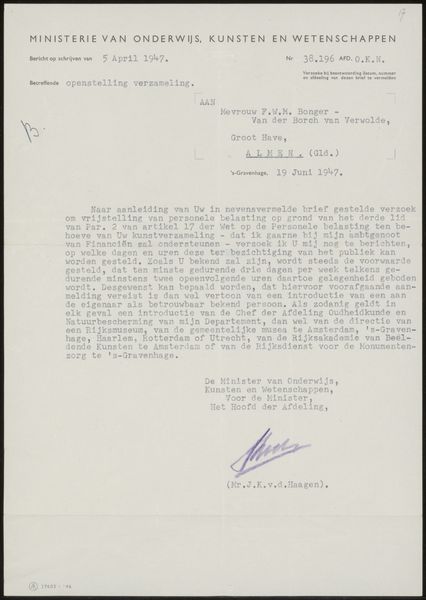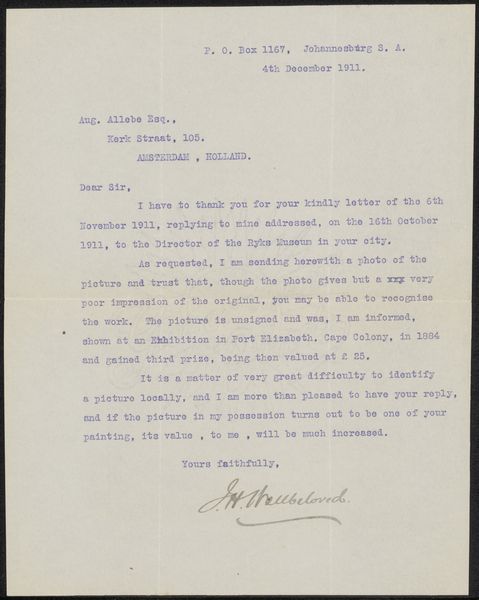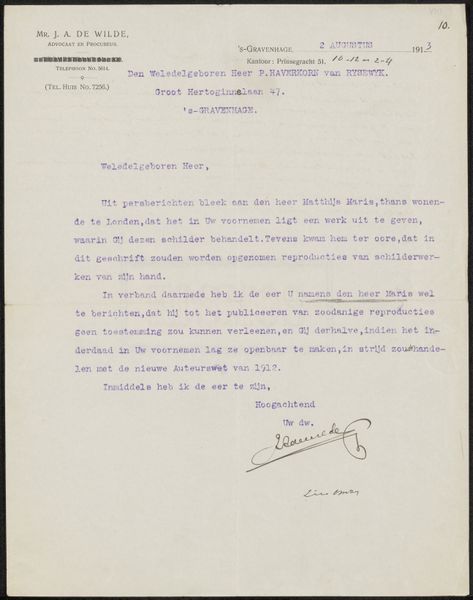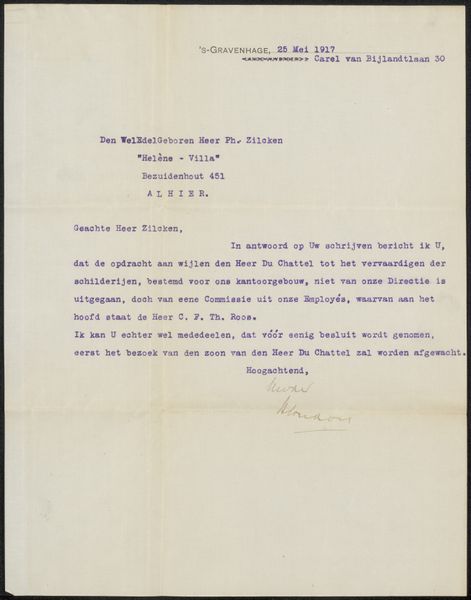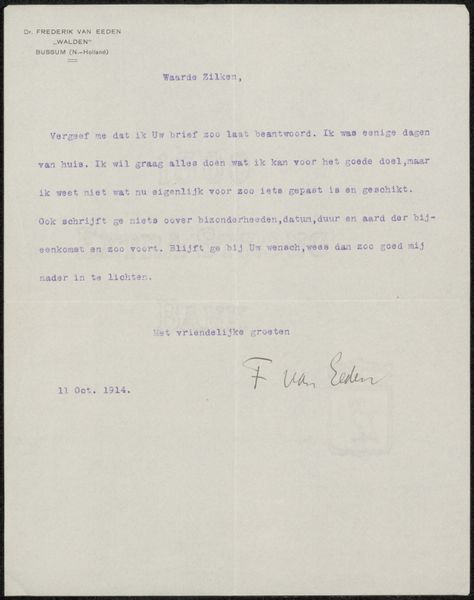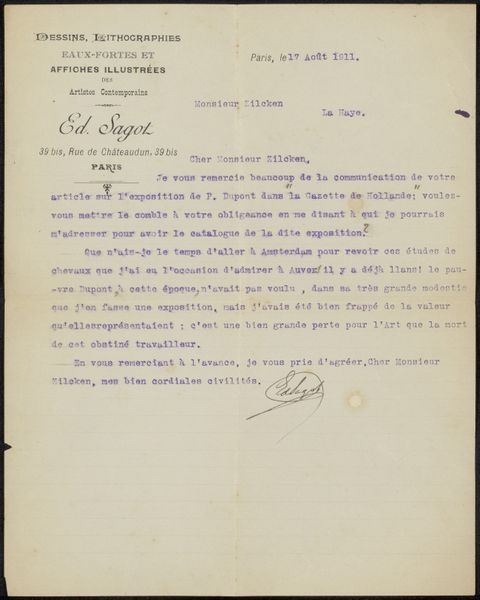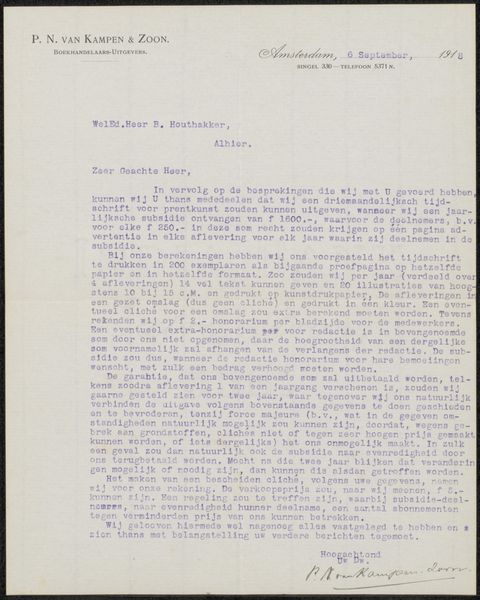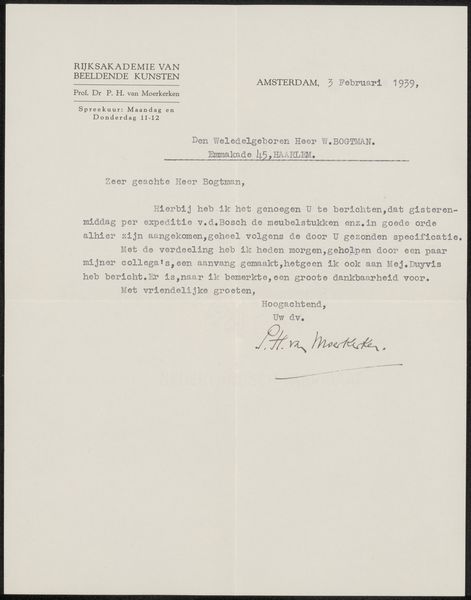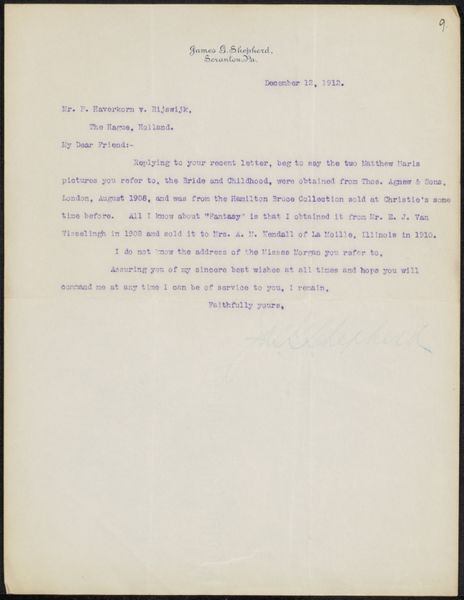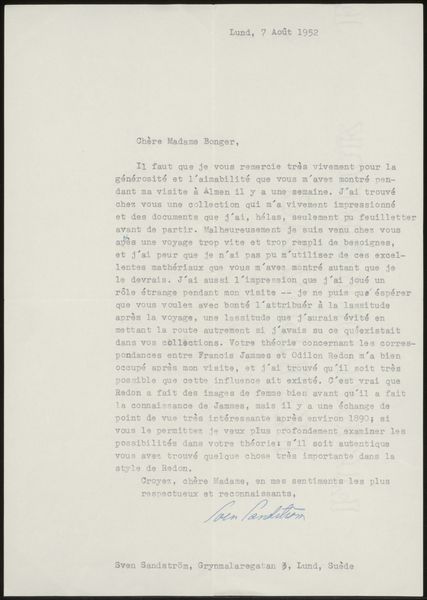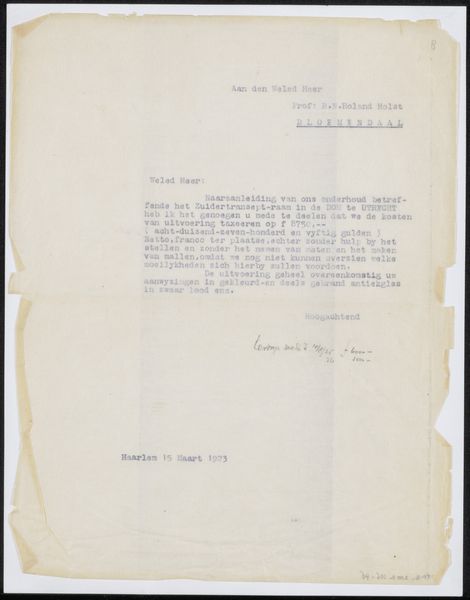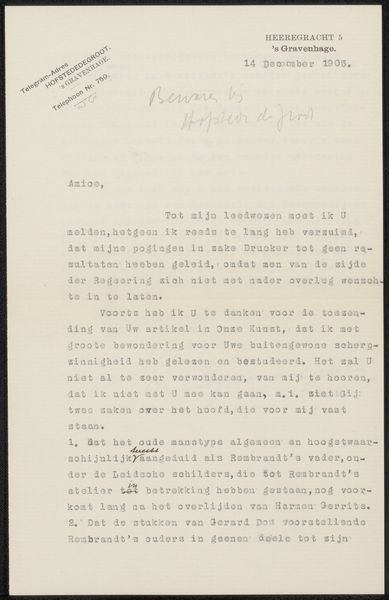
drawing, paper, ink
#
drawing
#
paper
#
ink
#
calligraphy
Copyright: Rijks Museum: Open Domain
Curator: Here we have a drawing, "Brief aan Jan Veth," possibly created between 1924 and 1925, composed using ink on paper. Editor: The contrast between the text and the aged paper makes it appear ghostly. I immediately notice the controlled formality of the main letter balanced by the more relaxed, almost intimate, handwriting at the bottom. There's an intriguing dichotomy present here. Curator: Indeed. It is a letter, written by Fritz Mannheimer to Jan Veth, but it contains much more than just a formal business correspondence. Note how the shift in script, the italicised quality to the personal note suggests emotional intensity, perhaps even revealing a more intimate side of their relationship. It reflects the era's societal conventions juxtaposed with individual expression. Editor: I agree, the visual hierarchy is captivating. The upper portion presents itself with the deliberate precision of typed prose, yet the lower section seems to resist the rigidity with spontaneous and curving lines. It’s a dance between duty and desire right there on the page. Curator: Also consider what Mannheimer might be saying, perhaps inadvertently. His request, subtly assertive, demonstrates the societal weight of position. But it's also an emblem of its time, capturing a fleeting moment of intellect. It bridges worlds, uniting the public face of a renowned figure and an intimate glimpse into his private world, thus providing us insight into the complexities of intellectual society. Editor: This is true, the materiality itself whispers of secrets exchanged in studies filled with pipe smoke and hushed conversations. This piece is much more than a letter; it’s a complex tableau of line, form, and shadow, invoking the social dynamics of the time. A story about contrasting realities, bound together on this fragile, aged page. Curator: Yes, reflecting on it, the artwork bridges these visible forms of the past with the ephemeral exchange, thus revealing history through form, a message forever penned on paper. Editor: A compelling and sensitive expression, wouldn’t you say?
Comments
No comments
Be the first to comment and join the conversation on the ultimate creative platform.
